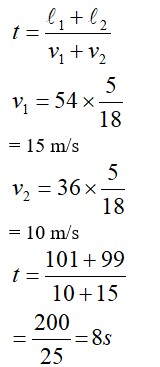3.13 Explain clearly, with examples, the distinction between:
(a) Magnitude of displacement (sometimes called distance) over an interval of time, and the total length of path covered by a particle over the same interval
(b) Magnitude of average velocity over an interval of time, and the average speed over the same interval. [Average speed of a particle over an interval of time is defined as the total path length divided by the time interval]
Show in both (a) and (b) that the second quantity is either greater than or equal to the first
When is the equality sign true? [For simplicity, consider one-dimensional motion only]
3.13 Explain clearly, with examples, the distinction between:
(a) Magnitude of displacement (sometimes called distance) over an interval of time, and the total length of path covered by a particle over the same interval
(b) Magnitude of average velocity over an interval of time, and the average speed over the same interval. [Average speed of a particle over an interval of time is defined as the total path length divided by the time interval]
Show in both (a) and (b) that the second quantity is either greater than or equal to the first
When is the equality sign true? [For simplicity, consider one-dimensional motion only]
-
1 Answer
-
3.13
(a) Let us take the example of football world cup 2022. During Argentina match, Di Mario (A) passed the ball to Messi (B). Messi instantly passed the ball to Di Mario. Now the magnitude of displacement of the ball is 0 as the ball returns to Di Mario at the initial position. But the total length covered by the ball is AB + BA = 2AB. Hence total length covered by the particle (the ball) is more than the magnitude.
(b) If t is the time taken to cover the entire distance, the magnitude of the average velocity of the ball over time interval t = Magnitude of displacement / t = 0 / t = 0
The average speed of the ball = Total lengt
...more
Similar Questions for you
Please find the solution below:
[h] = ML2T-1
[E] = ML2T-2
[V] = ML2T-2C-1
[P] = MLT-1
According to question, we can write
10 =
Average speed
(d) Initial velocity
Final velocity
Change in velocity
Momentum gain is along
Force experienced is along
Force experienced is in North-East direction.
Taking an Exam? Selecting a College?
Get authentic answers from experts, students and alumni that you won't find anywhere else
Sign Up on ShikshaOn Shiksha, get access to
- 66k Colleges
- 1.2k Exams
- 680k Reviews
- 1800k Answers



